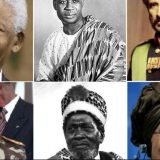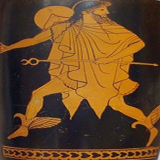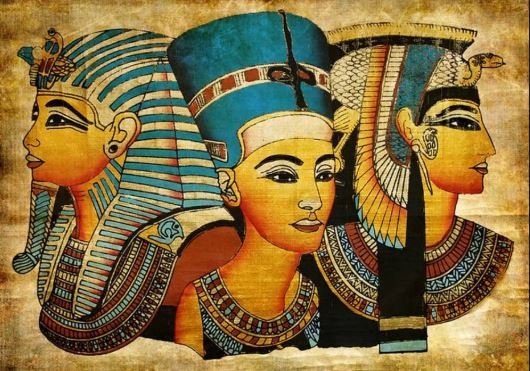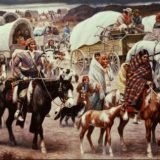9 Famous Middle Kingdom Pharaohs
The Middle Kingdom of Egypt, spanning from around 2055 BC to 1650 BC, was a period of cultural and political rejuvenation after the chaos of the First Intermediate Period. Several important pharaohs took the throne during this time, enacting significant reforms, commissioning monumental architectural projects, and reinforcing Egypt’s dominance in the surrounding regions.
ALSO READ: Empires and Kingdoms That Ancient Egyptians Fought Against
Below, World History Edu takes a look at some of the most notable pharaohs of the Middle Kingdom:
Mentuhotep II (circa 2061-2010 BC)

Mentuhotep II was the sixth ruler of the Eleventh Dynasty. Image: Relief showing Mentuhotep II in front of Montu from his mortuary temple in Deir el Bahri, Londres
-
- Reunification: Mentuhotep II is credited with reunifying Egypt after the First Intermediate Period, bringing together Upper and Lower Egypt after years of disunity and regional rule.
- Capital: He shifted the capital to Thebes, which would remain a significant city throughout much of ancient Egyptian history.
- Monumental Architecture: Mentuhotep II built an expansive mortuary complex at Deir el-Bahari in Thebes, blending elements of both Upper and Lower Egyptian architecture.
Amenemhat I (circa 1991-1962 BC)

Amenemhat I was the first king of the 12th Dynasty of the Middle Kingdom. Image: Relief of Amenemhat I from his pyramid complex at El-Lisht
-
- New Capital: Amenemhat I established a new capital at Itjtawy, near the modern Lisht, moving away from the Theban heartland. This move was symbolic of a unified and centralized Egypt.
- Literature: His reign is associated with “The Instructions of Amenemhat,” a didactic text wherein the murdered king advises his son from beyond the grave.
- Security: Recognizing the internal threats that plagued past rulers, Amenemhat I established a core of elite guards and increased the power of the vizier to maintain stability.
Senusret I (circa 1971-1926 BC)

Senusret I was the second pharaoh of the 12th Dynasty. Image: Statue of Senusret I in the Cairo Museum, Egypt
-
- Constructions: Senusret I was a great builder. The famous White Chapel at Karnak, built of alabaster, is attributed to his reign.
- Foreign Expeditions: He initiated military campaigns into Nubia, ensuring control over important trade routes and resources.
Amenemhat II (circa 1876-1842 BC)

Amenemhat II was the third pharaoh of the 12th Dynasty of ancient Egypt. Image: Sitting statue attributed to Amenemhat II later usurped by 19th Dynasty pharaohs Berlin, Pergamon Museum
-
- Trade and Mining: Amenemhat II sent expeditions to the Sinai Peninsula to mine turquoise and to Nubia for its vast resources.
- Diplomacy: Records indicate that Amenemhat II engaged in diplomatic relations with neighboring regions, emphasizing the Middle Kingdom’s extensive trade networks.
Senusret II (circa 1897-1878 BC)

Senusret II was the fourth pharaoh of the 12th Dynasty of ancient Egypt. Image: Head of a statue of Senusret II from Karnak
-
- Innovations: Senusret II is credited with implementing an extensive irrigation system in the Faiyum region, thereby converting it into fertile agricultural land.
- Pyramid: His pyramid at El-Lahun was distinctive for its entrance, located in the pavement of the courtyard rather than the pyramid’s face.
Senusret III (circa 1878-1839 BC)

Senusret III was the fifth ruler of the 12th Dynasty of Egypt. Image: A statue of Senusret III at the British Museum, showing the traits that are peculiar for this king
-
- Military Achievements: Often considered the greatest pharaoh of the Middle Kingdom, Senusret III launched successful campaigns into Nubia, establishing a series of forts along the Nile, such as Buhen and Semna, to solidify Egyptian control.
- Economic Reforms: Senusret III understood the importance of a centralized economy and took steps to bring nomarchs’ (regional governors) powers under royal control.
- Art: His reign witnessed a significant transformation in royal sculpture, with statues depicting the king as more mature and introspective, in contrast to the youthful vigor of earlier representations.

Amenemhat III (circa 1860-1814 BC)

Amenemhat III was the sixth king of the Twelfth Dynasty of the Middle Kingdom.
-
- Economic Boom: His reign is marked by an economic boom, with extensive mining activities in the Sinai Peninsula and quarrying in the deserts.
- Land Reclamation: Amenemhat III undertook massive land reclamation projects in the Faiyum, making it Egypt’s breadbasket.
- Labyrinth: He is credited with constructing a massive mortuary temple complex known as the “Labyrinth” at Hawara, which Herodotus and other ancient writers praised for its incredible intricacy.
Amenemhat IV (circa 1815-1807 BC)

Amenemhat IV was the seventh king of the 12th Dynasty of Egypt. Image: Scarab of Middle Kingdom pharaoh Amenemhat IV
-
- Continued Policies: Amenemhat IV continued many of the policies of his predecessor, especially emphasizing mining activities.
- Mystery: His sudden death and lack of a clear successor ushered in a period of uncertainty, leading to the decline of the Middle Kingdom.
Sobekneferu

Sobekneferu was the last ruler of the Twelfth Dynasty of the Middle Kingdom
Sobekneferu, also known as Neferusobek, was the last pharaoh of Egypt’s Twelfth Dynasty during the Middle Kingdom, ruling for almost 4 years. She followed Amenemhat IV, possibly her brother or husband.
However, her legitimate claim to the throne was through her father, Amenemhat III. Unlike previous female rulers, she adopted a full royal title and was the first to associate her name with the crocodile god, Sobek.
Although evidence from her reign is limited, a few statues and inscriptions tied to her have been found. The unfinished Northern Mazghuna pyramid might have been meant for her, but this is speculative. A papyrus referring to “Sekhem Sobekneferu” suggests a connection to the pyramid. Despite limited material remains, she is recognized in various ancient king lists.
Frequently asked questions about the Middle Kingdom of ancient Egypt

The Middle Kingdom (2040-1782 BC) followed Egypt’s First Intermediate Period, marking a reunification after political division. Beginning with Mentuhotep II in the Eleventh Dynasty, it lasted until the Twelfth Dynasty’s end. While Eleventh Dynasty kings ruled from Thebes, the Twelfth Dynasty monarchs governed from el-Lisht. Image: A painted relief depicting pharaoh Mentuhotep II, from his mortuary temple at Deir el-Bahari
Here’s what you need to know about the Middle Kingdom
What time period does the Middle Kingdom cover?
The Middle Kingdom spans from approximately 2055 BC to 1650 BC, between the end of the First Intermediate Period and the beginning of the Second Intermediate Period.
Who were the prominent pharaohs of the Middle Kingdom?
Notable pharaohs include Amenemhat I, Senusret I, Senusret III, and Amenemhat III.
What are the defining characteristics of the Middle Kingdom?
The Middle Kingdom is often seen as a “classical” period in Egyptian history, marked by literary, architectural, and artistic achievements. Centralized pharaonic power was re-established, leading to a resurgence in monumental building projects.
How did the Middle Kingdom end?
The Middle Kingdom’s decline began around the 13th Dynasty, leading to the Second Intermediate Period characterized by the invasion of the Hyksos.
Were there any major architectural achievements during this period?
Yes, notable structures include the pyramid of Amenemhat III at Hawara, and the Labyrinth, an ancient maze-like building complex.
How was the art different in the Middle Kingdom compared to other periods?
Art from this period often depicted daily life, showing a more realistic and less idealized representation of individuals. Sculptures also became more detailed and individualized.
What was the religious landscape like?
The cult of Osiris grew in importance, promising resurrection to those deemed worthy. The pharaoh’s role as a divine mediator became emphasized, bridging gods and humans.
How did the Middle Kingdom influence literature?
This period is renowned for its literary accomplishments, producing texts like “The Tale of Sinuhe” and wisdom literature like “Instructions of Amenemhat.”
Were there significant military campaigns during this era?
Yes, pharaohs like Senusret III launched military campaigns into Nubia, fortifying Egypt’s southern border and asserting dominance.
How did administration and governance evolve?
The “nomarch” system of provincial governance was overhauled, reducing their power. Instead, the central government strengthened, streamlining administration under the pharaoh’s authority.
How did the Middle Kingdom impact trade and economy?
There was an expansion of trade networks, with evidence of contact with the Levant, Crete, and Nubia. This facilitated the exchange of goods, ideas, and culture.
What challenges did the Middle Kingdom face?
Apart from external threats, challenges included internal strife, periodic droughts, and eventually, the socio-political fragmentation that led to its decline.
How did the Middle Kingdom relate to its neighbors?
Diplomatic relations were fostered, especially with the neighboring Nubians. Trade expeditions were also sent to places like Punt, highlighting a degree of international interaction.
Was there a notable shift in burial practices?
Yes, pyramid building declined after the early Middle Kingdom, with rock-cut tombs in places like Beni Hasan becoming more prevalent.
What legacy did the Middle Kingdom leave?
The Middle Kingdom set many cultural, artistic, and administrative precedents that would be emulated or adapted in subsequent periods, leaving an indelible mark on Egyptian civilization.

























